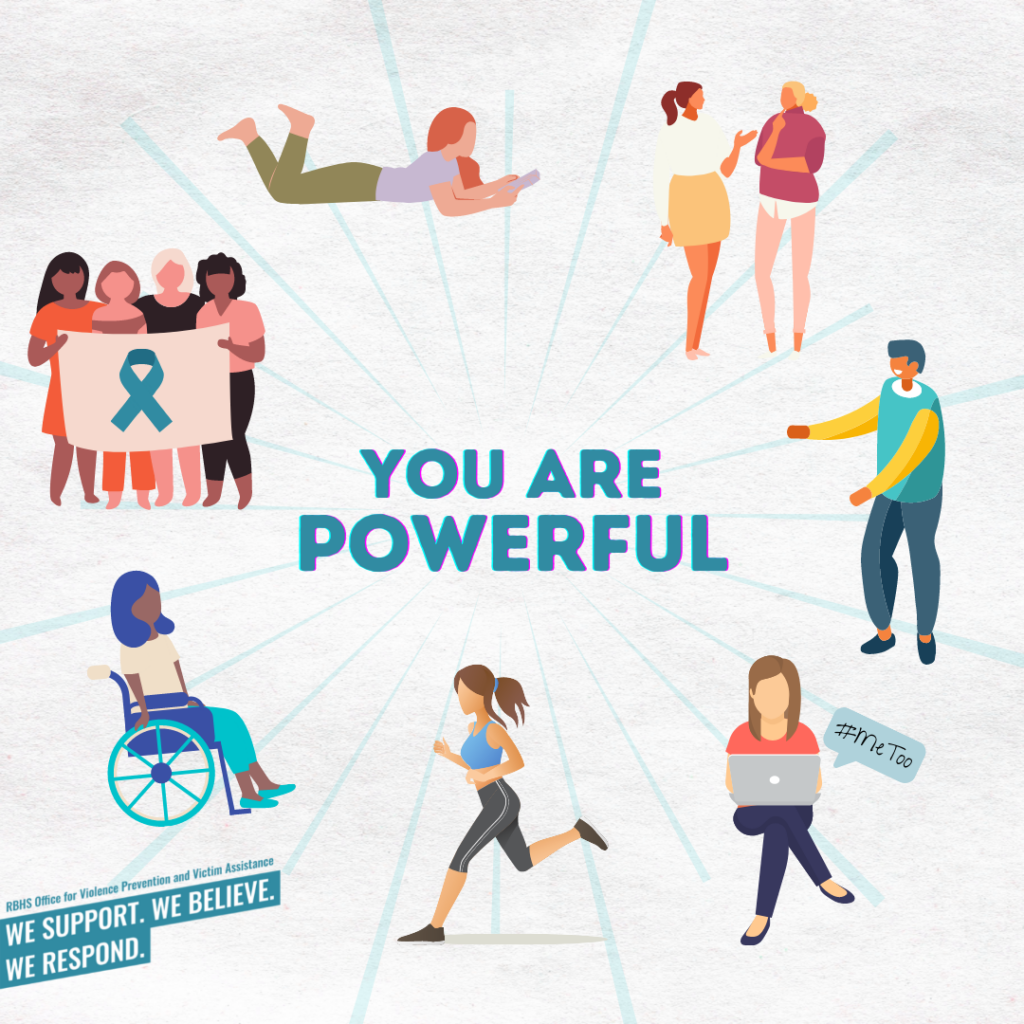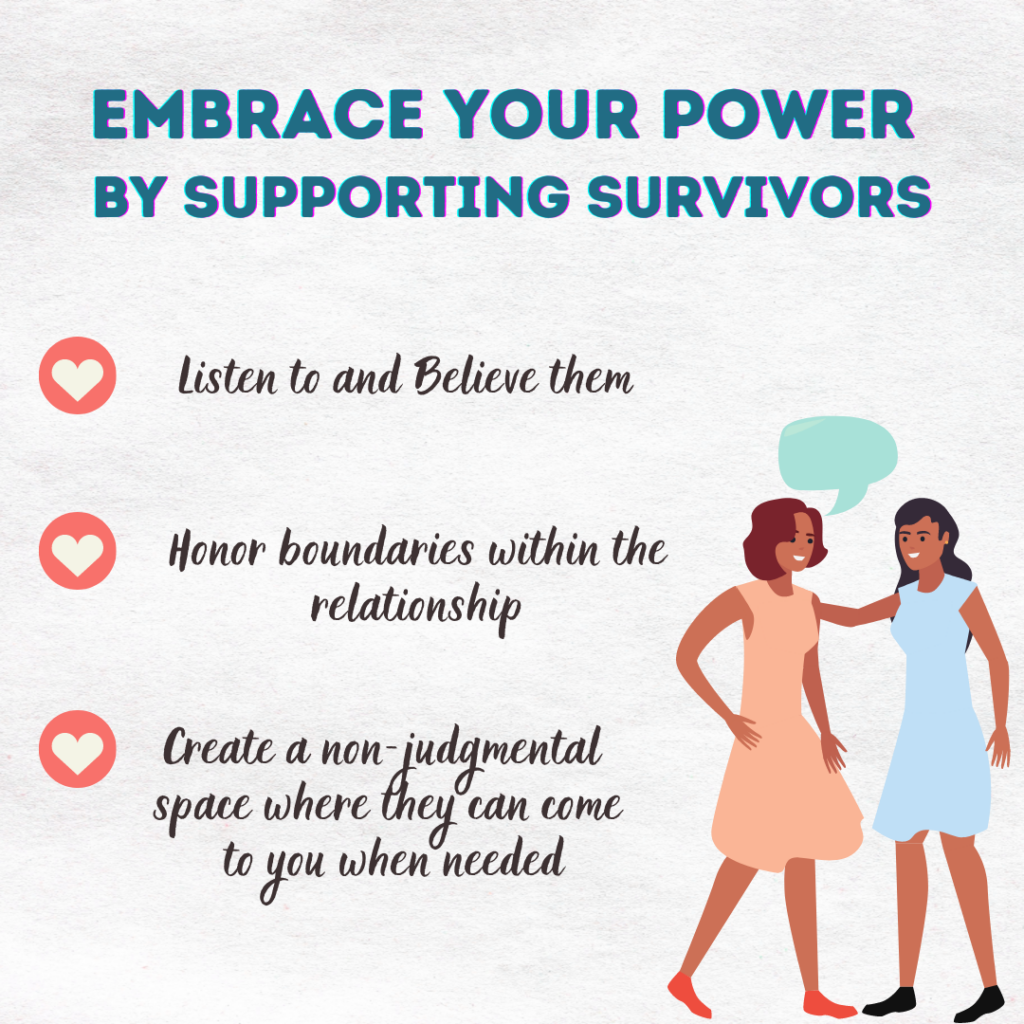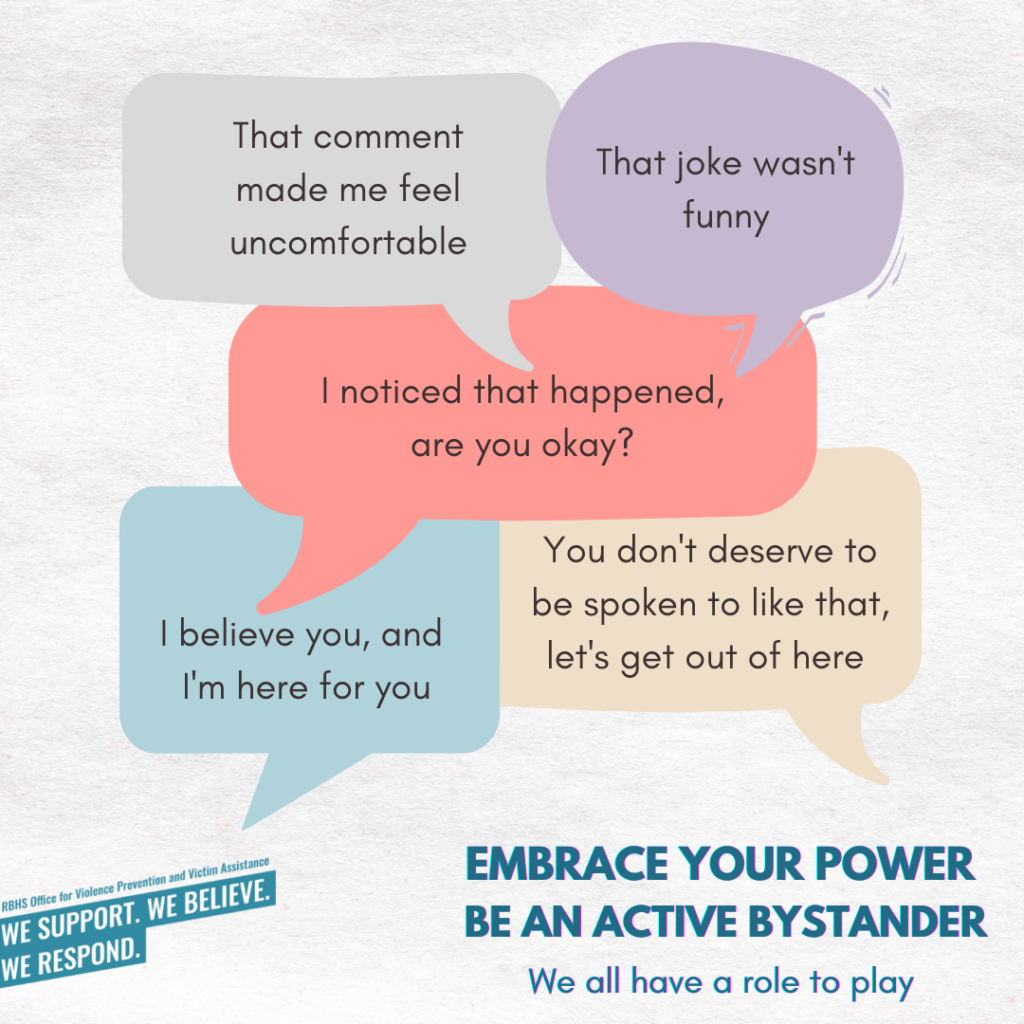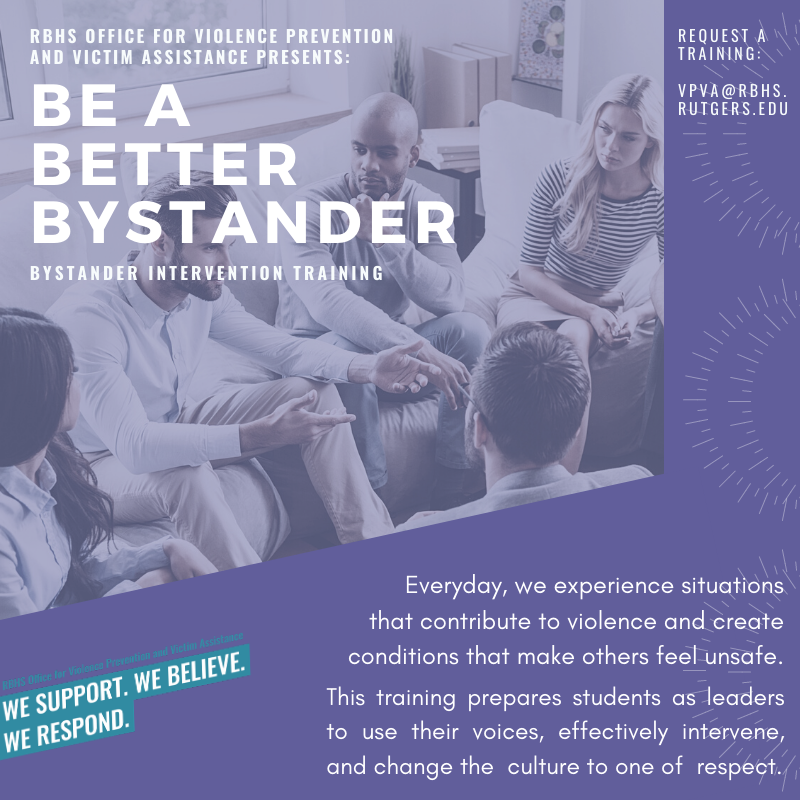
Step Up To Create Safe, Respectful, & Inclusive Spaces
We all have a role to play in creating safer environments, where violence and harassment are not tolerated. No matter who you are, you can take action. You have the power to make a difference. It is not about intervening perfectly; it is about doing something over nothing. You are not alone in these situations and can utilize your community and the available resources. These can include your fellow classmates, program directors, Student Affairs, mentors, supervisors, colleagues, staff, faculty, VPVA, Title IX, etc. Changing the culture starts with each of us.
The choice to act may not always feel straightforward or easy but the more you learn about (and practice!) methods to intervene, the more prepared you will be to act when witnessing harmful situations. Each method offers feasible options to disrupt a moment and take action, addressing the person causing harm or those on the receiving end. You can use multiple methods at once, and switch them up depending on the situation and your level of comfort.

A Brief Explainer of the 5 D’s of Bystander Intervention
Direct– Call in/out the specific behavior directly to end the situation, if it feels safe to do so. You can talk to or message the person causing harm and let them know their behavior is not okay.
“That joke wasn’t funny.”
“You don’t deserve to be spoken to like that, let’s get out of here.”
“This post is inappropriate.”
Delegate– Find your people, involve those around you, and build a plan together. If you are looking to report the incident, try to let the person who is being harmed know or collaborate with them in reporting.
“Did you notice that? Am I the only one who sees it this way?”
“I saw this post and it makes me uncomfortable, would you want to address it with me?”
Distract– Get creative in interrupting the situation to give space to break the moment or allow people to leave the interaction.
“Don’t we have that meeting to get to?”
“Sorry to interrupt, do you know where the Medical Science Building is?”
“Let’s slow down and take a breath..”
Document– Write down/record what you saw and provide it to the person who experienced harm later. Documenting can help support a person’s report or bring more awareness to an issue.
“I took a video of that incident, would you like a copy?”
“Here are some notes about the incident I witnessed, let me know how I can support you additionally.”
“I took a screenshot of that post before it was deleted, let me know if you want me to send it to you and then delete it off my phone”.
Delay– Address the behavior later with the person potentially causing harm. Or check in with the person that experienced it and refer them to resources.
“Were you aware of how you came off in that conversation?”
“I noticed that happened. Are you okay?”
“I saw what that post said about you. Do you want to talk about it?

VPVA believes that every member of RBHS has a responsibility to create a safer culture based on responsibility and respect. VPVA offers training giving greater detail on bystander intervention and supporting those who experience harm.

Reach out at vpva@rbhs.rutgers.edu for:
- Requests or more information about training and prevention education;
- Inquiries about awareness programming for your school or student organization;
- Invitations for a VPVA representative to be a guest speaker.
